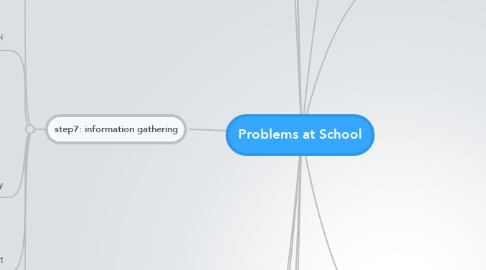
1. Step4: hypothesis organisation
1.1. hormonal inbalance
1.1.1. mainly in the growth hormone
1.2. etiology
1.2.1. chromosomal abnormalities
1.2.2. phsycosocial abnormality
1.2.3. metabolic disorder
1.2.3.1. hypothyrodisim
1.2.4. tumors
1.2.4.1. crainopharingoma
2. Step5:learning objectives
2.1. to know the physiology of the pituitary gland focusing in the growth hormone
2.1.1. and how to measure the GH
2.2. to list the difirential diagnosis of having short stature
2.3. to know the main changes in the piupirty in both male and female
3. step6: review
3.1. pituitary gland physiology
3.1.1. anterior part( adenohypophysis) secreted 5 hormones
3.1.1.1. TSH
3.1.1.2. LH/FSH
3.1.1.2.1. induce the development of gonads
3.1.1.2.2. LH
3.1.1.3. ACTH
3.1.1.4. Gh
3.1.2. 600 mg located in the sella tursica
3.1.3. the posterior part(neurohypophysis)
3.1.3.1. oxcitocine
3.1.3.1.1. 2 main functions
3.1.3.2. ADH
3.1.3.2.1. it is released with there is increase of the osmolarity
3.1.3.2.2. and in the case of the blood loss
3.2. GH
3.2.1. regulate some of the metabolic function of the body
3.2.2. it decrease the rate of glucose usage by cells
3.2.3. increase the rate of usage glicogen
3.2.4. so it increase the insulin resistance
3.3. measuring of the GH
3.3.1. by having deficiency in the GH accompanied with 3 other hormones of the anterior pituitary
3.3.2. If it less than 3 we challenge the patient with the insulin like growth hormone
3.4. causes of the short stature
3.4.1. radiation
3.4.2. the short stature
3.4.2.1. defined as having a height below the normal by as least 2 standers deviation
3.4.2.1.1. it could be idiopathic or due to a medical condition
3.4.3. vitamins deficiency
3.4.4. hormones deficiency
3.5. puberty defined when the child reached the age of reproductive
3.5.1. for female
3.5.1.1. when she has her first menstrual cycle (9-11) and end (40-50)
3.5.1.1.1. the breast development is the first sign to be notice in the puberty
3.5.2. male
3.5.2.1. when he has the ability to ejaculate(13-15) and ends ( 50-60)
3.5.2.1.1. the normal physiology of puberty incloding the changes in the sound and present the hair and increase the muscle bulks
3.5.3. .
3.5.4. liptin is an important hormone in the regulating of these steps so a mutation will result in the a type of delay
4. step7: information gathering
4.1. HPL
4.1.1. gain 4 cm in height in the previous two years
4.1.2. noticed to be short at his primary school
4.1.3. the glasses he wears does not show any improvement in his vision
4.1.4. taking panadol tables to decrease his headache
4.1.5. continuance retardation in his cognitive development
4.2. PH
4.2.1. normal delivery
4.2.2. no sugery
4.2.3. normal pregnancy
4.2.4. his birth weight 2.7 KG
4.2.5. his birth height was 60 cm
4.2.6. achieved his developmental millstone in the an appropriate age
4.3. dietry
4.3.1. always being a picky eater
4.3.2. liking fast food
4.3.3. eating vegetable diet most of the time
4.4. parents height and weight
4.4.1. father's height is 175
4.4.2. mother 160 cm
4.5. physical examination
4.5.1. height is 129
4.5.1.1. below the normal
4.5.2. his weight is 40 KG
4.5.3. size of the testes is 3 ML
4.5.4. normal BP and P
4.5.5. Visual examination
4.5.5.1. fundoscope reveal pale left optic disk
4.5.5.2. RT 5/6
4.5.5.3. L is severely impaired
4.6. investigation review the results
5. step8: diagnostic decision and objectives
5.1. pituitary adenoma (tumor destructing the pituitary gland )
5.2. management of the pituitary adenoma
6. step9: reviewing the last session
6.1. essam did that
7. step10 Management
7.1. Non pharmacological
7.1.1. surgery
7.1.1.1. contraindication
7.1.1.2. surgery has two approaches
7.1.1.2.1. from the trans-sphyniod bone
7.1.1.2.2. from the crainotomy
7.1.1.3. it is indicated if the pituitary gland is not functioning normally
7.1.2. radiation
7.1.2.1. usually is not used
7.1.2.1.1. if you are not able to excise the whole tumor you can use it
7.1.2.2. gama knife radiation therapy is very specific
7.1.2.3. however the main drawback is that it take long time to show the benefit
7.2. pharmacological treatment
7.2.1. first of all we should define exactly the patient problem
7.2.1.1. If he has decrease in the secretion of the pituitary galnd
7.2.1.1.1. we should know is it result from micro or macro pituitary
7.2.2. chemotherapy
7.2.2.1. it is not recommended
7.2.3. somatostatine analog
7.2.3.1. however it is not used because it does not show any kind of improvement
7.2.4. side effects
7.2.4.1. nousia, vomiting and dizziness
7.2.5. first of all we should define exactly the patient problem
7.3. general information before to start the treatment
7.3.1. -the effect of the mass on the optic cheisim
7.3.2. the cure rate
7.3.2.1. how much the surgeon excise from the pituitary
7.3.2.2. after the surgery most of the time the hormones do not come back to their normal level
7.3.3. the recurrence is common within
7.3.4. education of the patient is a crucial point in his management, so DO NOT FORGET THAT
7.3.4.1. it also need a multidisciplinary approaches
7.4. complication
7.4.1. diabetes insipidous
7.4.2. affecting the vision
7.5. our patient
7.5.1. we agree to the surgery and monitor his hormones level
7.5.1.1. we might consider the radiation after 1 month if there is a remaining part of the tumor
8. step11: feedback and resources
8.1. 1- harrison
8.2. 2-uptodate
8.3. 3- greenspan's
8.4. 4-divitson
8.5. 5-UCLA for neurosurgeon
9. Step1:
9.1. difficult words
9.1.1. bullied
9.1.2. chubby
9.2. identify cues
9.2.1. immature
9.2.2. 13-year-old boy
9.2.3. chubby with short stature
9.2.4. growth retardation
9.2.5. poor work at his school
9.2.6. poor vision, sitting in the front of the class
9.2.7. not keen to play sport
9.2.8. complaining of having increasing headache
